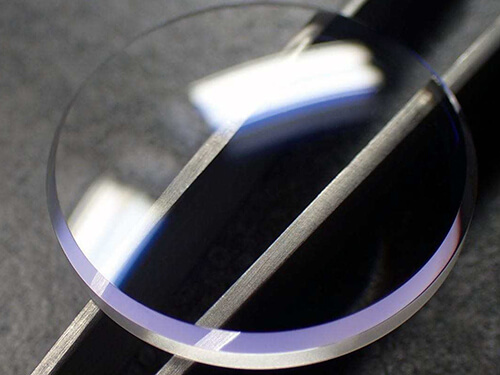In the world of advanced materials, both sapphire glass and tempered glass have gained prominence for their remarkable properties and diverse applications.
From smartphone screens to high-end watches, these materials offer unique advantages that cater to various industries.
In this article, we will delve into the characteristics, benefits, and applications of sapphire glass and tempered glass, shedding light on their differences and helping you make informed choices for your specific needs.
Sapphire Glass
Sapphire glass, derived from synthetic crystalline aluminum oxide, is celebrated for its exceptional hardness, surpassing even that of tempered glass.
This hardness grants it remarkable scratch resistance, making it a favored choice for applications where durability is paramount.
Sapphire glass boasts high optical clarity, allowing light to pass through with minimal distortion.
It finds applications in luxury watches, smartphone screens, camera lenses, and optical equipment requiring pristine clarity.
Advantages of Sapphire Glass
Unmatched Hardness: Second only to diamond, sapphire glass is incredibly hard, ensuring scratch resistance and longevity.
Optical Excellence: Its transparency and minimal light distortion make it ideal for applications demanding optical precision.
Durability: Sapphire glass withstands impacts and mechanical stress, suitable for harsh environments.
Chemical Resistance: Highly resistant to chemicals, it thrives in corrosive environments.
Thermal Stability: It can endure high temperatures without distortion, crucial in demanding conditions.
UV and Infrared Transparency: Vital for applications involving specific wavelengths.
Biocompatibility: It’s suitable for medical implants and instruments due to its biocompatibility.
Tempered Glass:
Tempered glass, a form of safety glass, is created through controlled thermal and chemical processes that enhance its strength. Tempering results in increased impact resistance and safety features. While tempered glass might not match sapphire glass in terms of hardness, it offers excellent shatter resistance and is used in various applications where safety is a concern.
Advantages of Tempered Glass
Safety: Its shatter-resistant properties reduce the risk of injury in case of breakage.
Strength: Although not as hard as sapphire glass, tempered glass still offers impressive durability.
Thermal Resistance: It can handle rapid temperature changes better than standard glass.
Cost-Efficiency: Tempered glass can be more cost-effective for applications that don’t require the extreme hardness of sapphire glass.
Customizability: Tempered glass can be cut, shaped, and bent to suit various design requirements.
Comparison of Sapphire Glass and Tempered Glass
While both sapphire glass and tempered glass have their advantages, the choice between them depends on the specific application.
If ultimate scratch resistance and optical clarity are paramount, sapphire glass is the preferred option.
On the other hand, when safety, impact resistance, and cost-efficiency are the main considerations, tempered glass emerges as the more practical choice.
Conclusion of Sapphire Glass and Tempered Glass
Sapphire glass and tempered glass are exceptional materials that have revolutionized industries requiring durability, safety, and optical precision.
While sapphire glass excels in scratch resistance and optical performance, tempered glass shines in safety features and versatility.
Understanding the unique attributes of each glass type allows you to make informed decisions when selecting the right material for your application.

HY offers a range of OEM custom sapphire glass and tempered glass solutions tailored to your specific needs.
Contact us to learn more about how we can provide the ideal glass solution for your industry-leading products.